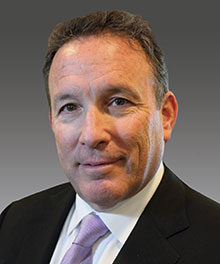Surge Pricing?

Wendy’s has already backpedaled on an announcement it would be testing “dynamic pricing” at its restaurants starting in 2025 after sparking an uproar among regulars about the possibility of surge pricing. Many consumers worried that if they showed up during the lunchtime rush, they would pay a little more for their burger and fries after President & CEO Kirk Tanner mentioned dynamic pricing on an earnings call a few weeks back.
The fast-food giant has since clarified that it is opting to try digital menu boards that “could allow us to change the menu offerings at different times of day and offer discounts and value offers to our customers more easily, particularly during the slower times of the day.” With an announcement like that, many fast-food lovers are still skeptical.
That said, I appreciate Wendy’s spirit of experimentation. As many of you know, we have a very active food & beverage practice at Marcum. Many restaurants are struggling with high food and labor costs. They are looking for fresh ways to improve profits and long-term sustainability, whether by using kiosks for ordering or deploying a robot to clean up spills. Given the volume of sales at some busy fast-food locations, digital menu boards could be just what Wendy’s needs to cover the added labor costs associated with staffing up for the lunchtime rush.
But as a leader, I can see how this experiment could easily backfire. Humans are driven by emotions. If it does turn out that people are paying an additional 25 cents for a burger because they got hungry at 12:30 pm and not 11:45 am, or got caught in a busy drive-through, that may seem a little unfair. Most people go to Wendy’s for an inexpensive and quick meal. If they have to pay more for their meal at peak times of day, they may leave with a sense of injustice, which doesn’t bode well for how they feel about the brand. Or they just may go elsewhere.
It’s important for restaurant execs to keep in mind that dynamic pricing isn’t happening in a vacuum. Those of us who live in New York City will soon experience congestion pricing with tolls, unless the MTA is overruled, an idea other major metro areas are considering, as well. The idea is we’ll think twice about driving into busy areas if the tolls get high enough during rush hour. And it does reduce traffic, which is why more cities are adopting it. Unlike cities, however, most businesses don’t actually want to reduce traffic. They want more business.
Of course, some consumers might try to beat the crowds and take their lunch break at 11 am or 2 pm, but that could have unintended consequences. Imagine if dynamic pricing catches on among every fast-food brand, and there are even more cars on the road at random hours than we’re experiencing now, compounding one side effect of the work-from-home trend. Some towns are already contending with all-day traffic jams.
If more merchants opt for dynamic pricing, fast-food lovers may have to make an even bigger change than getting to their favorite franchise a few minutes early.
